16 Surreal Natural Phenomena That Seem Too Strange to Be Real

Have you ever looked at an elephant-shaped rock or a colorful hot spring and thought, “Wow, nature is truly wild!”? We often think of visiting breathtaking landscapes, marveling at golden sunsets, and, of course, the classics like the Grand Canyon or Yosemite Valley.
But what if I told you there are a ton of mind-blowing natural phenomena right here in the US that you probably haven’t even heard of?
From glowing bays to a lava-looking waterfall, nature always has a way of surprising us with its creativity. So, here are the most unbelievable natural phenomena in the US that you didn’t know to add to your bucket list.
1. Sailing Stones of Death Valley, Racetrack Playa, California
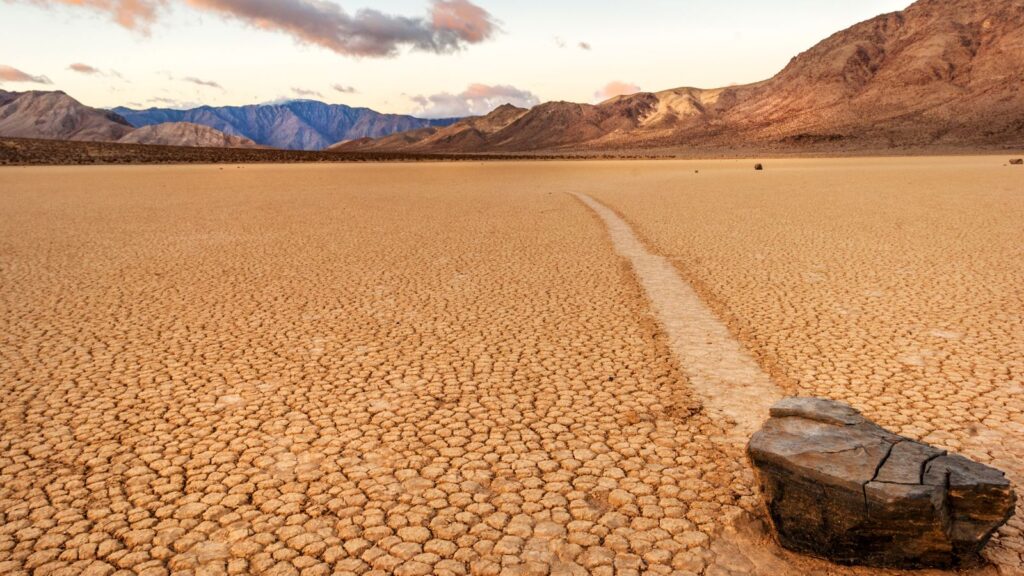
Ever heard of rocks that move on their own? At Racetrack Playa in Death Valley, the Sailing Stones play a mysterious game of slide autonomously across the desert floor.
These rocks leave behind long trails behind them, and nobody’s been able to catch them in the act (except on camera). Some of these stones weigh up to 700 pounds! The famous “Champion Stone” has the longest track at over 1,500 feet.
Scientists once thought aliens were involved, but it turns out that when the playa is coated in a thin layer of ice, strong winds push the rocks along.
2. Fly Geyser, Black Rock Desert, Nevada
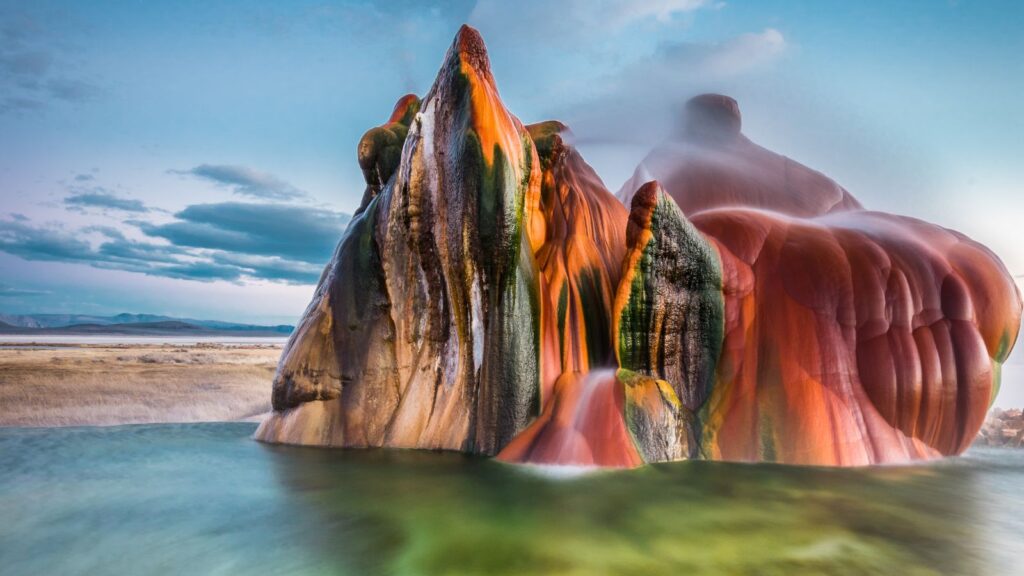
Hidden away in the Black Rock Desert is Fly Geyser, a colorful geyser that is constantly evolving by shooting steamy water and minerals into the air. Fly Geyser is actually the result of a drilling accident in the 1960s.
The geyser sprays water up to five feet high, and its vibrant colors come from thermophilic algae that love living in hot water. The formation is covered in rainbow-hued terraces and psychedelic mounds.
It’s on private land, so you’ll need to join a guided tour to get up close.
3. Yosemite Firefall, Yosemite National Park, California
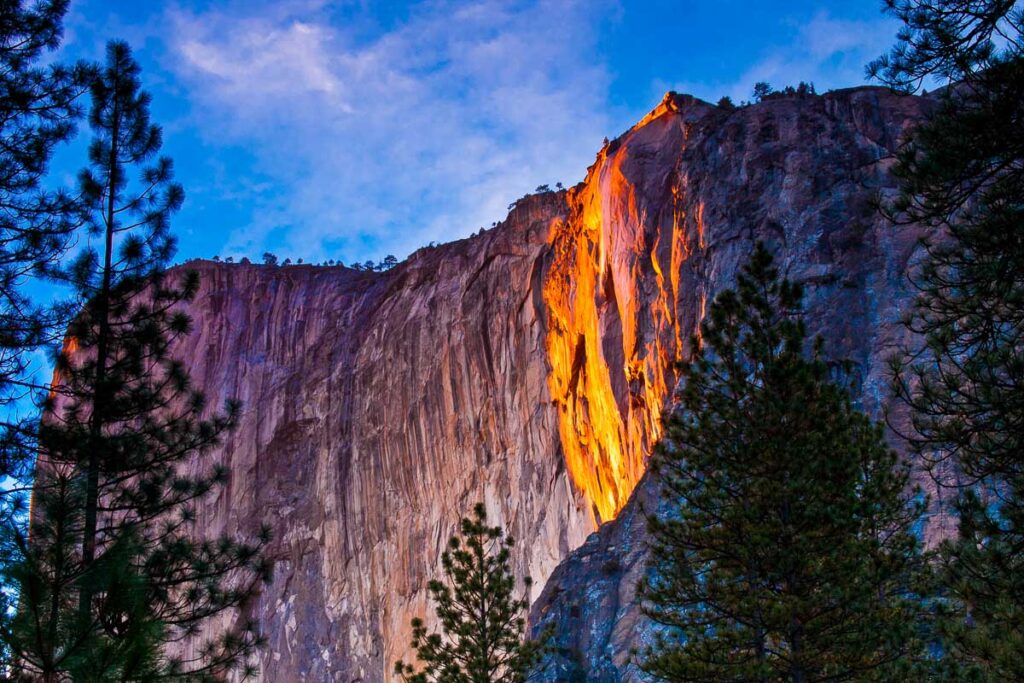
Once a year, the setting sun transforms a waterfall in one of America’s most beloved national parks into a stream of glowing lava. It’s the Yosemite Firefall at Horsetail Fall.
This natural phenomenon only occurs in February when the sun’s angle is just right, casting a fiery glow on the falling water. It lasts for about ten minutes, so blink, and you might miss it.
Thousands of photographers flock here every year, hoping to capture what looks like a real-life Photoshop effect. The fall drops 1,570 feet, but during Firefall, every inch of it blazes like an inferno.
4. Grand Prismatic Spring, Yellowstone National Park, Wyoming
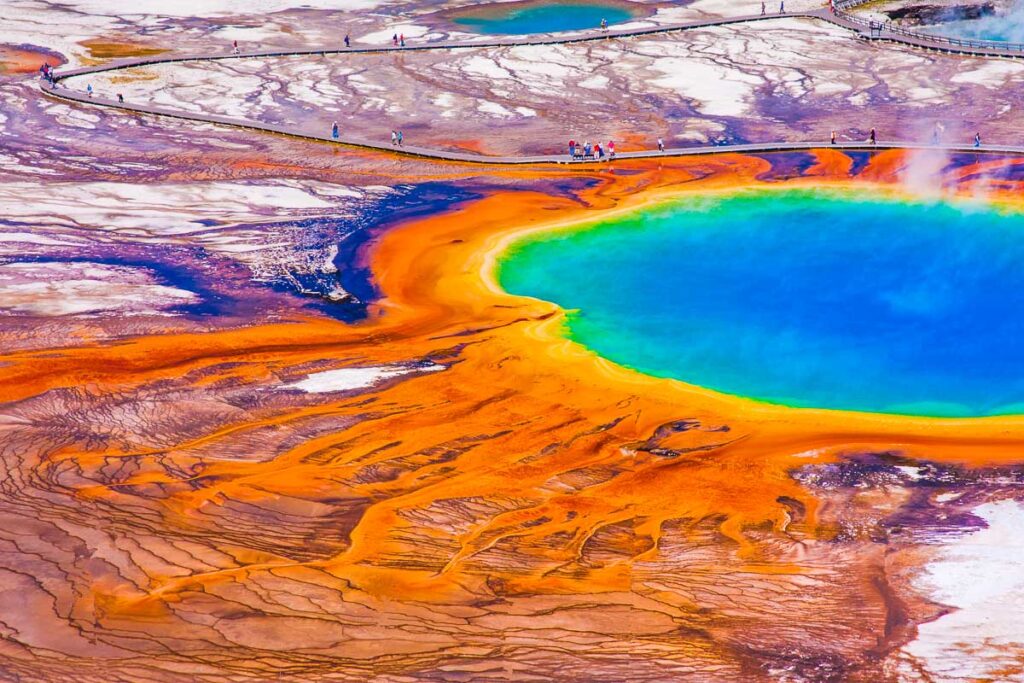
Nature’s most epic paint spill can be found at Yellowstone’s Grand Prismatic Spring. With a diameter larger than a football field and depths reaching 160 feet, it’s the largest hot spring in the United States.
The colors come from heat-loving bacteria and minerals, creating rings of blue, green, yellow, orange, and red.
The best view is from the nearby Fairy Falls Trail overlook, where the spring looks like an enormous eye staring back at you.
5. Spotted Lake, Osoyoos, Canada
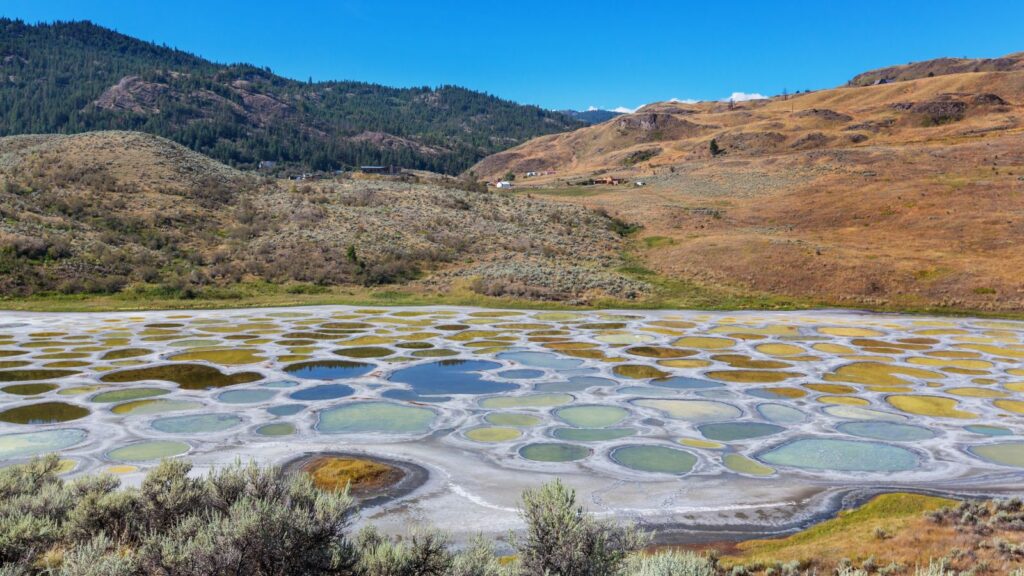
Although technically, this is in Canada but, as it’s right across the border from Washington state, we couldn’t leave it out. If you’re into polka dots, Spotted Lake in Osoyoos forms hundreds of colorful mineral spots as water evaporates during the summer
Each spot is rich in minerals like calcium, magnesium, and sodium sulfates, which crystallize and create pooles of green, yellow, and blue. The lake has been revered by indigenous people for centuries with healing powers.
6. The Wave, Coyote Buttes, Arizona
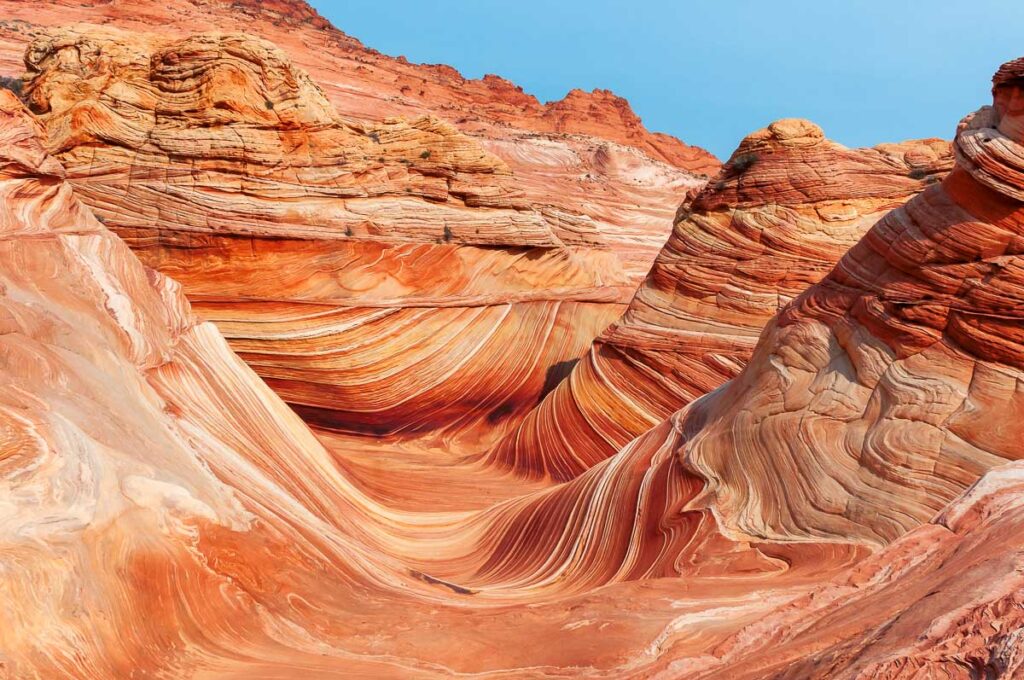
If you’re fortunate enough to get the converted permit for the Wave in Coyote Buttes, you’ll get to hike through wavy sandstone patterns and surreal formations that look like they were sculpted by Dali himself. The rock formations are over 190 million years old and formed by wind and water erosion.
The Wave is so popular and fragile that a lottery system allows only 64 lucky visitors to get permits each day.
7. Antelope Canyon, Page, Arizona

Antelope Canyon had been on my bucket list for years, and it doesn’t disappoint. With shooting light beams and smooth, wave-like rock formations, every moment in this canyon will make you want to snap more photos.
Located near Page, Arizona, this canyon is divided into six sections, but the two most popular are Upper and Lower Antelope Canyon. The upper section is famous for its easy access and dramatic shafts of light that pierce through the narrow openings above. The lower section lets in more light and is better year-round.
Since this canyon is on Navajo Nation lane, you will have to book a tour with a local outfitter.
8. Mono Lake, Eastern Sierra, California
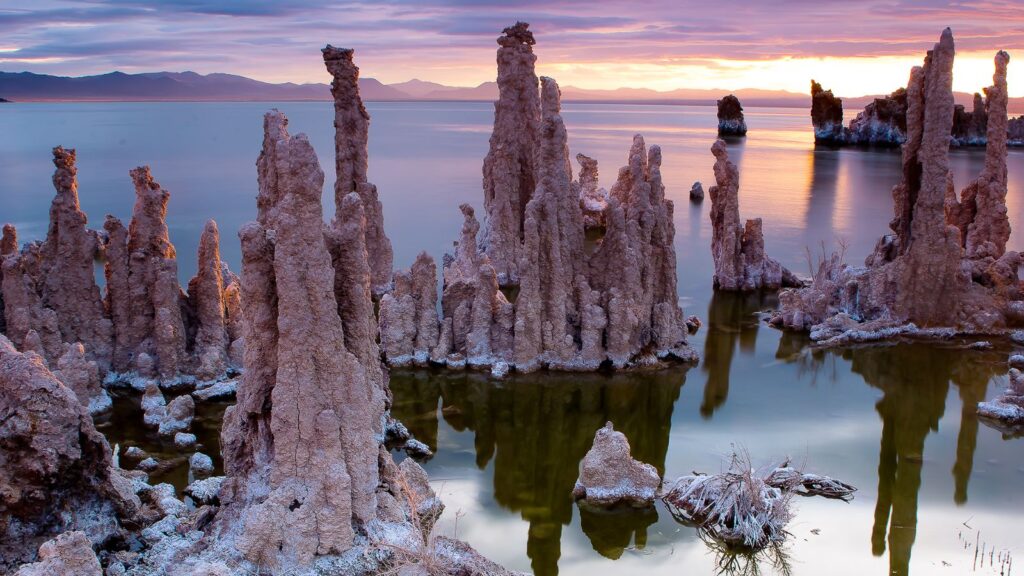
Mono Lake is like an alien landscape dropped into the Eastern Sierra, with its bizarre tufa towers rising from the water like ancient monuments. This alkaline lake is one of the oldest in North America, estimated to be at least 760,000 years old.
The tufa towers are formed by the interaction of freshwater springs and alkaline lake water. As you get closer, just be prepared for a strong “aroma” thanks to the brine shrimp and alkali flies that call this lake home.
9. Pink Salt Lake, Great Salt Lake, Utah
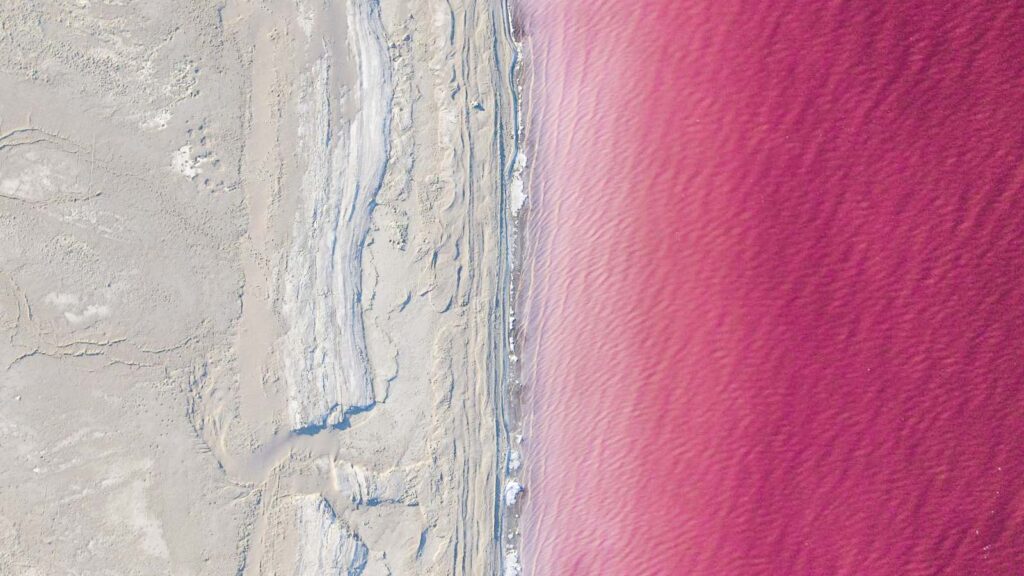
The Great Salt Lake in Utah has a secret: its waters can turn a shocking shade of pink! This hue is due to salt-loving bacteria and algae thriving in the lake’s super-salty conditions.
The north arm of the lake, separated by a causeway, is where you’ll find this cotton candy-colored water. The lake’s high salinity also means it can preserve animals in a calcified state, turning them into natural statues.
Warning: As beautiful as it seems, you might not want to swim here.
10. Ice Caves, Apostle Islands, Wisconsin
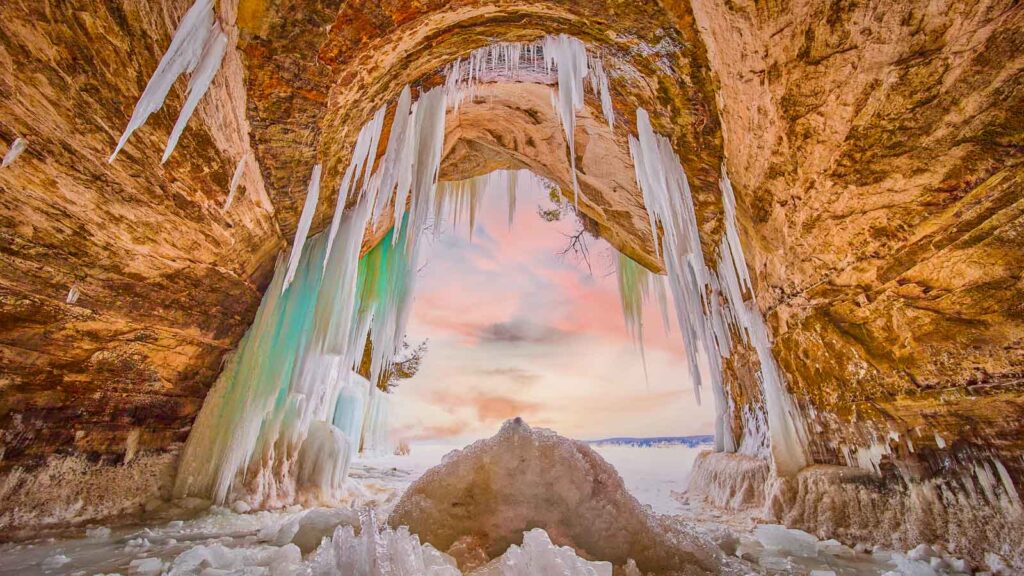
Once every few years in especially cold winters, the shorelines of Lake Superior freeze enough for you walk into the Ice Caves at Apostle Islands National Lakeshore.
Crystal-like icicles hang from red sandstone cliffs, creating shimmering ice caves and frozen waterfalls that are only accessible by foot when conditions are just right. Inside, you’ll find massive ice stalactites and stalagmites that look like crystal chandeliers.
This doesn’t happen every year, but when it does, January and February are your best bets.
11. Columnar Basalt Formations, Devil’s Tower National Monument, Wyoming
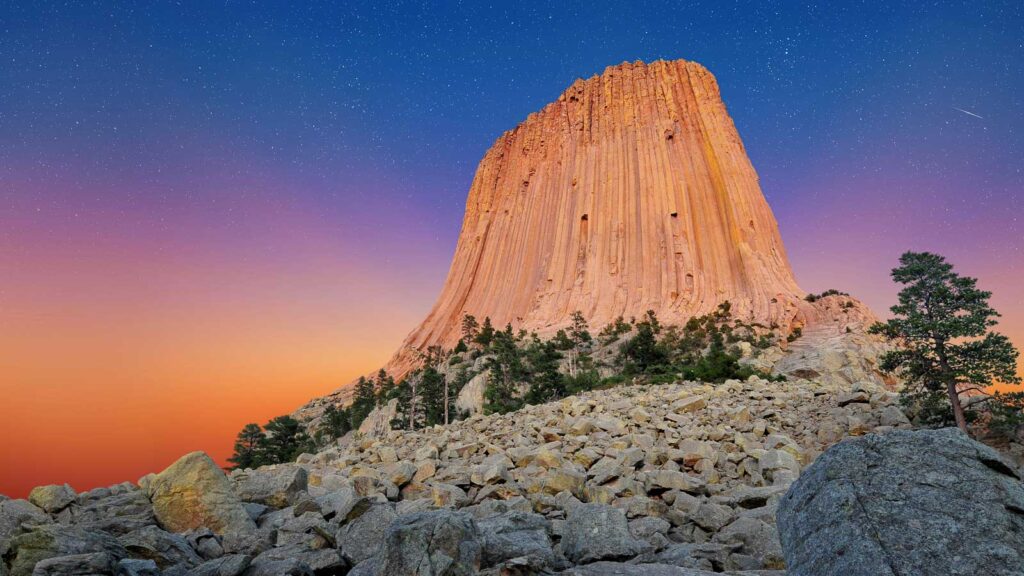
The Columnar Basalt Formations at Devil’s Tower National Monument is the nation’s first national monument and a sacred place for several Native American tribes. This impressive rock formation is made up of hundreds of vertical basalt columns that resemble huge organ pipes.
These columns were formed by ancient volcanic activity, creating hexagonal pillars that stack neatly against each other and can reach heights of over 100 feet.
It’s a popular spot for rock climbers, but you can also take the Tower Trail loop around the base.
12. Bioluminescence Blue Waves & Beaches
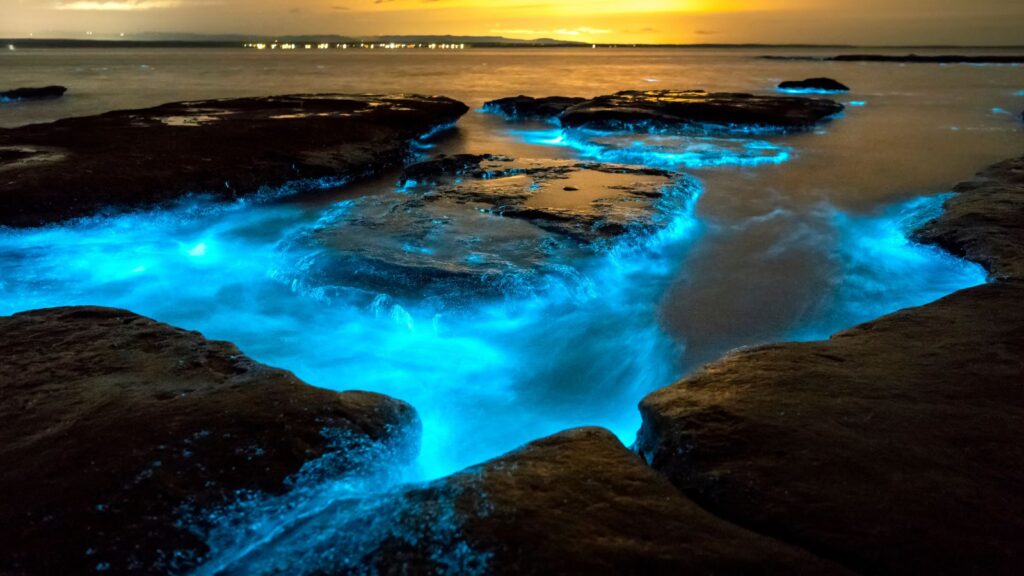
Bioluminescence happens more often than you’d think, but it never ceases to amaze. I’ve encountered it about five times now, and two of them were in the US!
During certain times of the year, millions of microorganisms called dinoflagellates light up the water when disturbed in areas along the coast of SoCal, Indian River Lagoon in Florida, and the Outer Banks in North Carolina.
I was also lucky to spot them while sailing around the Virgin Islands, a territory of the US.
13. Marfa Lights, Marfa, Texas
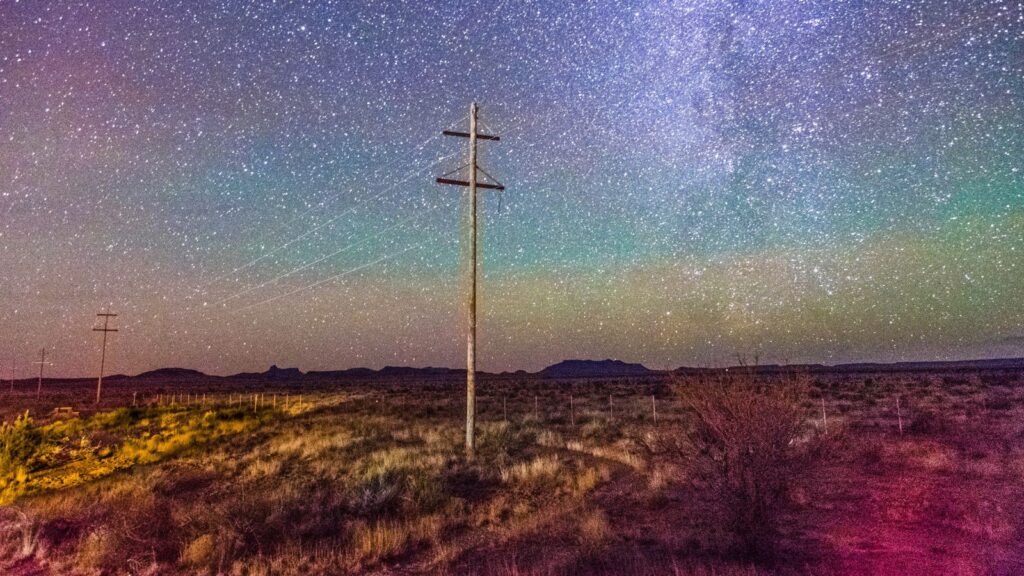
Marfa, Texas, might be a small town, but it’s got a big mystery: the Marfa Lights. These unexplained glowing orbs appear in the night sky and have baffled visitors since the 19th century. Some say they’re caused by swamp gas, others think it’s light refraction, and there’s even talk of UFOs.
Whatever they are, go out there yourself to see if you can spot anything out of the ordinary. I, sadly, did not.
The best place to see them is at the Marfa Lights Viewing Area, just east of town on Highway 90.
14. Sailing Icebergs, Alaska
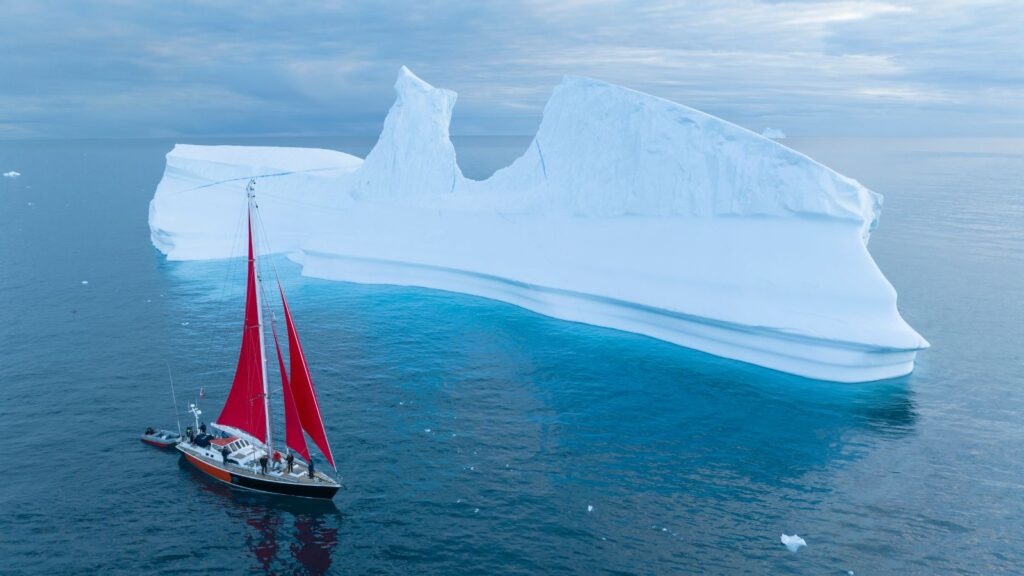
In Alaska, icebergs have a mind of their own. These hefty chunks of ice don’t just drift; they sail! Thanks to underwater currents, sailing icebergs can seem to defy the laws of physics, moving against the wind and waves.
Glacier Bay and Prince William Sound are prime spots to witness this icy phenomenon. Some of these icebergs are as big as a house, towering over boats like floating skyscrapers.
15. Pele’s Hair, Volcanoes National Park, Hawaii
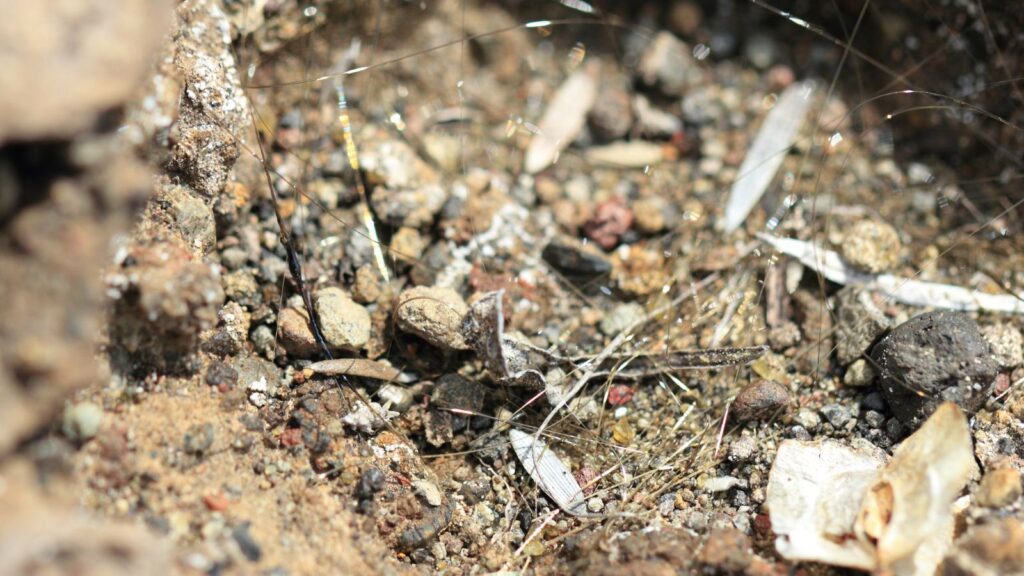
Pele’s Hair is a unique volcanic phenomenon found in Hawaii Volcanoes National Park. Named after Pele, the Hawaiian goddess of volcanoes, these fine threads of volcanic glass are formed during lava fountains. They’re so thin and delicate, scattered on the ground, you might not even notice them.
You’ll find these natural strands around Kīlauea and Mauna Loa, especially after eruptions. But be careful; touching Pele’s Hair is like handling fiberglass insulation.
16. Aurora Borealis, aka “The Northern Lights”
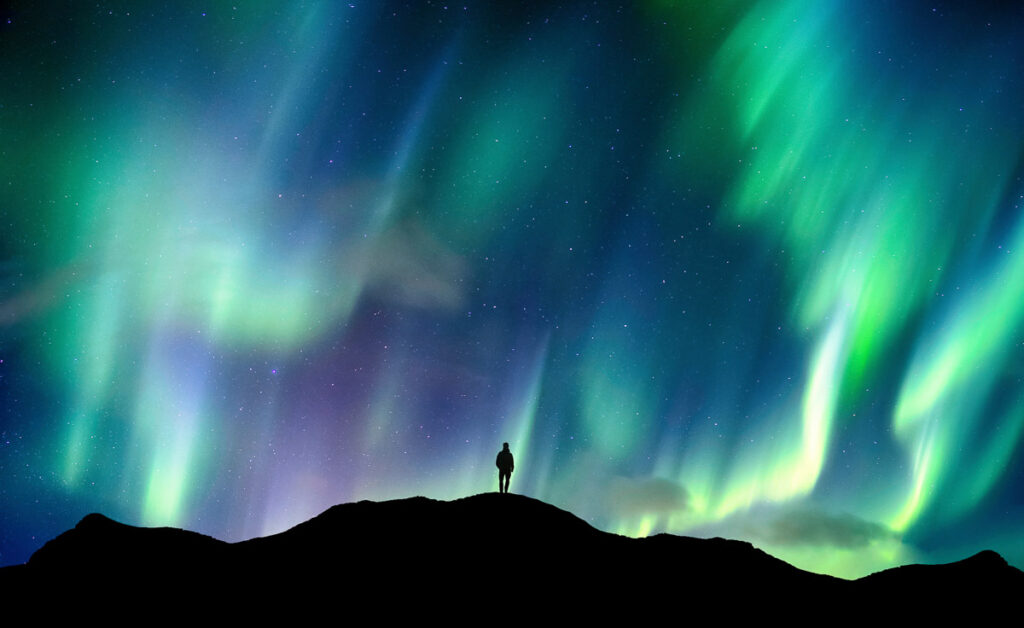
Most people know about this phenomenon, but I think everyone should see the Northern Lights at least once. I certainly wouldn’t mind seeing them over and over.
These dancing curtains of light are created by collisions between solar particles and gases in the Earth’s atmosphere.
The best time to see them is during winter when the nights are longer and darker. Some popular viewing spots include Fairbanks and Denali National Park. Sometimes, lower latitudes can also see the Northern Lights when solar flares are strong. During an especially strong flare in 2024, sightings were reported as far south as the Bahamas!
Catherine, a seasoned travel writer, has lived in 4 different states and explored 36 states and 28 national parks. After spending two years embracing van life, she's now dedicated to sharing her vast knowledge of day trips across America. Catherine's other works has been referenced in major publications like MSN, Self, and TripSavvy.
| MY FAVORITE TRAVEL RESOURCES |
✈️ Find amazing guided tours and experiences with Viator to maximize your time! 🏘️ Plan ahead and secure your accommodation with Booking.com in advance. 🧾 Rent a car with Discovercars in advance and get the best prices for your day trip adventures. |

